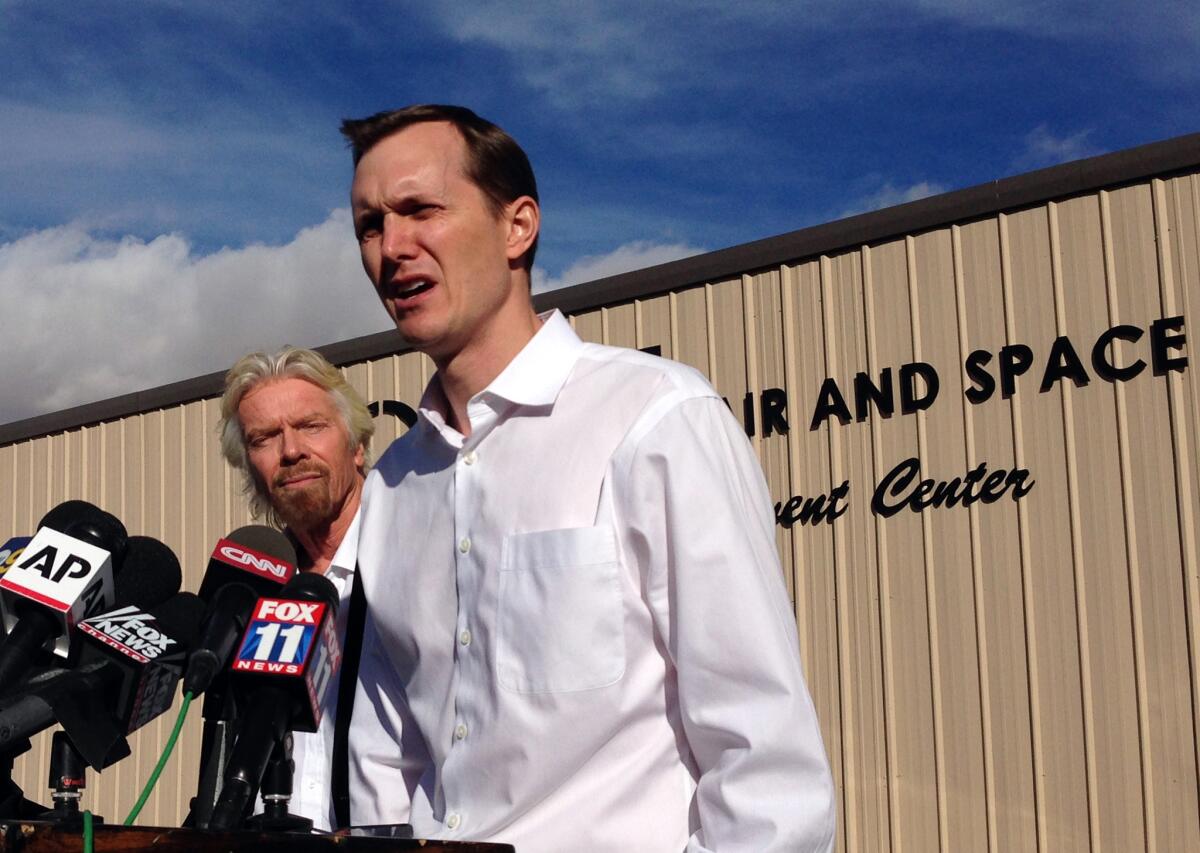Virgin Galactic CEO vows to continue space tourism venture

- Share via
Virgin Galactic’s chief executive told a Culver City crowd Thursday night that the company would continue its quest to send tourists to space despitethe fatal crash of its SpaceShipTwo two weeks ago.
“We have a new spaceship that’s going to be ready in a few months,” said George Whitesides, who runs British billionaire Richard Branson’s space venture. “So we’re going to make sure we get that one as safe as we can and keep going.”
Whitesides called Oct. 31 -- when SpaceShipTwo broke apart on a test flight, killing one of its two pilots -- “a tragic day.”
“There’s a reason why test pilots are respected as some of the most brave members of our society,” he said. “They are putting themselves in harm’s way to make vehicles better for the rest of us, safer for the rest of us.”
Whitesides made the comments to a panel that had been organized by the Rand Corp. long before the crash that left pieces of the rocket plane strewn across 35 miles of the Mojave Desert.
The tragedy was a major setback for Branson’s plan of taking tourists into space for $250,000 apiece.
After the event, in an interview with The Times, Whitesides dismissed growing concerns about the company’s safety practices as it struggles to continue a project that has already seen years of delays.
Though SpaceShipTwo had flown dozens of times, last month’s fatal test flight was only the fourth time it had fired its rocket engines. Also, it was the first time it had flown with a new motor using a different type of rocket fuel that engineers hoped would give it more thrust.
“We make sure the engineers are in charge and that’s what we’ve done from day one,” Whitesides told The Times. “The fact that the program has taken longer is a sign we are listening to the engineers. I find it ironic that people say we are rushing when the program has taken 10 years.”
Asked if the company would resume test flights next year on the spaceship that is under construction, he said, “For sure.”
The crash killed co-pilot Michael Alsbury. Pilot Peter Siebold was thrown from the rocket plane still strapped in his seat as the craft broke apart. Siebold managed to unbuckle from his seat as he fell and his parachute automatically deployed. He spent three days in a hospital.
Investigators with the National Transportation Board have focused on a move by Alsbury to prematurely unlock the rocket plane’s moveable tail. They say that action appears to have set off a sequence of events that within seconds caused the plane to break up.
The NTSB has said a final conclusion on the cause of the crash could take up to a year.
Whitesides was asked during the panel about the future of commercial space ventures.
“There’s so many exciting things happening now in the world of space,” he said. “There’s risk but there’s great reward. ... So I think being unafraid to try new things is important as we move forward.”
Follow me on Twitter @MelodyPetersen
More to Read
Inside the business of entertainment
The Wide Shot brings you news, analysis and insights on everything from streaming wars to production — and what it all means for the future.
You may occasionally receive promotional content from the Los Angeles Times.











